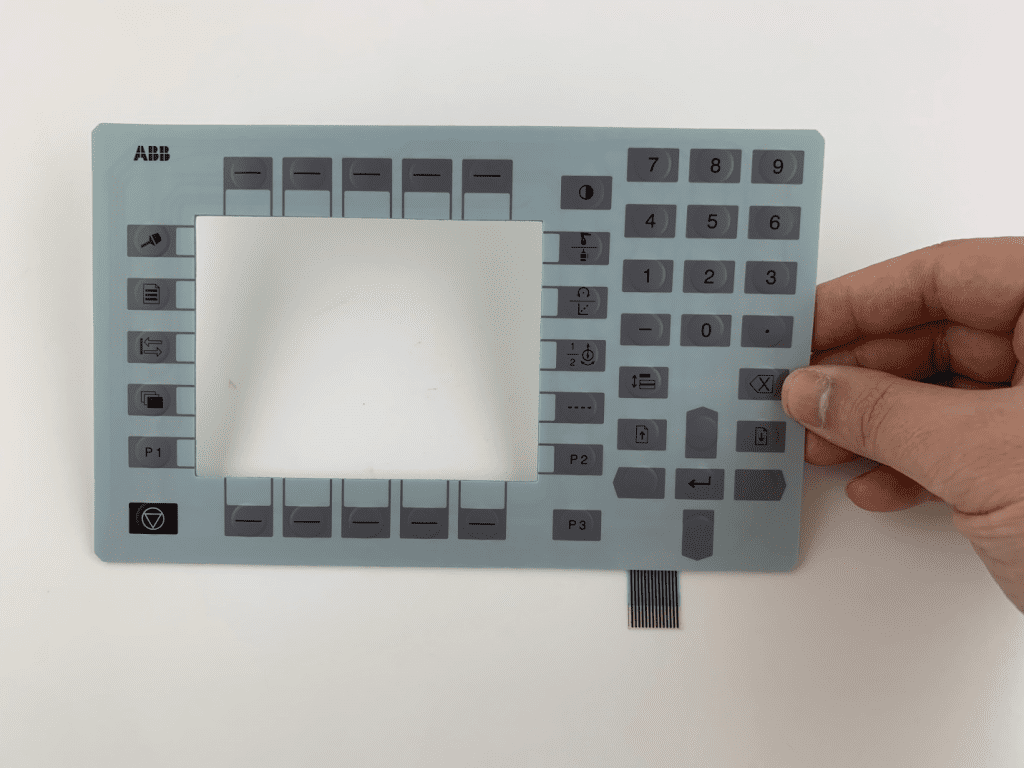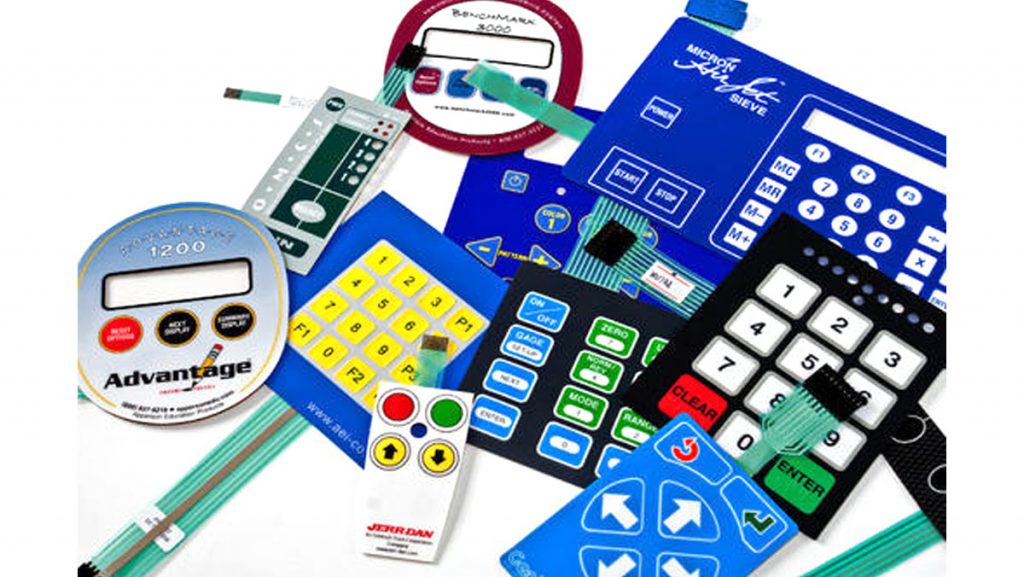Choosing the Right Membrane Switches for Your Product’s Needs
Choosing the Right Membrane Switches for Your Product’s Needs
Blog Article
Discover How Membrane Switches Function and Their Role in Modern Electronic Devices
Membrane Switches stand for a sophisticated integration of innovation and design within the world of modern-day electronics, working as essential interfaces in numerous tools. Consisted of several layers, these buttons make use of pressure-sensitive mechanisms to facilitate individual communication. Their applications cover numerous sectors, from customer electronic devices to clinical tools, highlighting their flexibility and significance. Understanding the details of Membrane button performance and their more comprehensive effects in boosting individual experience invites additional exploration into their style, benefits, and the cutting-edge developments shaping their future in innovation.
What Are Membrane Switches?

Membrane switches are distinguished by their toughness and resistance to environmental elements, such as dirt, dampness, and severe temperature levels. They can be personalized with different graphics, colors, and responsive comments choices, enhancing user experience while keeping aesthetic appeal - membrane switches. The consolidation of published circuits allows for seamless combination into tools, enhancing overall capability.
The adaptability of Membrane switches is obvious in their ability to sustain both simple and complicated control features. They can incorporate features such as LED indicators and touch-sensitive technology, dealing with particular customer requirements. As technology remains to evolve, Membrane Switches remain essential for enabling instinctive and effective customer interfaces, therefore playing a pivotal role in the advancement of modern digital tools.
Components of Membrane Switches
Membrane switches are composed of numerous vital elements that function with each other to develop a trusted and functional interface. The primary components include the graphic overlay, sticky layer, spacer layer, and conductive traces.
The visuals overlay functions as the customer interface, generally published on a versatile substrate such as polyester or polycarbonate. This layer not just offers aesthetic allure yet likewise consists of tactile comments, aesthetic cues, and protective functions. Under the visuals overlay exists the adhesive layer, which protects the button to the device and makes sure durability versus ecological stresses.
The spacer layer is critical for maintaining the essential void in between the graphic overlay and the circuit layer. This gap permits the activation of the switch when pressure is used. The conductive traces, typically made from silver or carbon, form the electric pathways that finish the circuit when the button is involved.
Additionally, a backing layer may be consisted of for structural assistance and insulation. These components team up flawlessly, making certain that Membrane buttons are both user-friendly and resilient, making them indispensable in various contemporary electronic applications.
Just How Membrane Switches Job
How do Membrane Switches feature effectively within digital devices? Membrane Switches run on the principles of pressure-sensitive modern technology, making use of a split building that consists of visuals overlays, glue layers, and conductive components.
The design of Membrane buttons is essential for their reliable procedure (membrane switches). The layers are meticulously crafted to provide tactile feedback, longevity, and resistance to environmental elements such as moisture and dirt. The incorporation of domes-- small, raised locations within the button-- improves responsive action, providing individuals with a recognizable click sensation upon activation
In addition, Membrane switches can be personalized in terms of dimension, shape, and graphics, making them ideal for different applications. They are frequently utilized in control panels, medical gadgets, and customer electronics as a result of their smooth layout and dependability. Generally, the effective performance of Membrane switches is critical in improving user interaction and making sure seamless operation in modern electronic devices.

Applications in Modern Instruments
Utilizing their one-of-a-kind design and functionality, Membrane buttons have actually see this here come to be essential parts in a large range of contemporary digital devices. These versatile image source user interfaces are utilized in consumer electronics, industrial tools, medical gadgets, and auto controls, giving smooth user communication.
In consumer electronic devices, Membrane buttons are generally located in devices like microwaves, washing equipments, and various other home tools, where they allow user-friendly control with a smooth account. Their low-profile style assists in integration into small gadgets, enhancing aesthetic allure without endangering functionality.
In industrial applications, Membrane Switches act as control panels for machinery, offering longevity and resistance to harsh settings. Their capacity to stand up to moisture and pollutants makes them optimal for usage in production and handling markets.
Clinical tools additionally gain from Membrane buttons, which are created to be very easy to clean and keep, guaranteeing health in clinical settings. They are often made use of in analysis equipment, client surveillance systems, and mobile medical tools, where reliability is vital.
Advantages of Membrane Switches
One of the essential benefits of Membrane switches is their adaptability, which enables them to be customized for a range of applications across multiple sectors. These switches can be designed in different sizes and shapes, suiting one-of-a-kind product needs while supplying seamless integration into tools. Their thin account allows a sleek and small design, often boosting the aesthetic appeal of electronic items.
One more substantial benefit is their toughness - membrane switches. Membrane switches are commonly resistant to dust, dampness, and chemicals, making them perfect for harsh atmospheres. This resilience expands their life-span contrasted to conventional mechanical buttons, minimizing the demand for frequent substitutes
Additionally, Membrane Switches offer cost-effectiveness. The production procedure involves printing modern technologies that lessen manufacturing costs, especially for big runs. This affordability, integrated with reduced upkeep demands, makes them an appealing choice for producers.

Final Thought
In conclusion, Membrane Switches stand for a significant improvement in individual interface innovation within contemporary electronics. As the demand for durable and user-friendly interfaces continues to grow, the duty of Membrane switches in shaping individual experience will certainly expand.
Membrane Switches Get More Information represent an advanced assimilation of innovation and style within the world of contemporary electronics, serving as essential interfaces in numerous gadgets.In the world of modern electronic devices, Membrane Switches serve as vital elements that facilitate individual interaction with gadgets. As innovation proceeds to progress, Membrane Switches stay important for enabling reliable and instinctive customer interfaces, thereby playing a pivotal function in the innovation of modern-day digital tools.
How do Membrane Switches function properly within electronic gadgets? In general, the efficient functioning of Membrane buttons is crucial in enhancing individual communication and guaranteeing seamless operation in modern digital gadgets.
Report this page